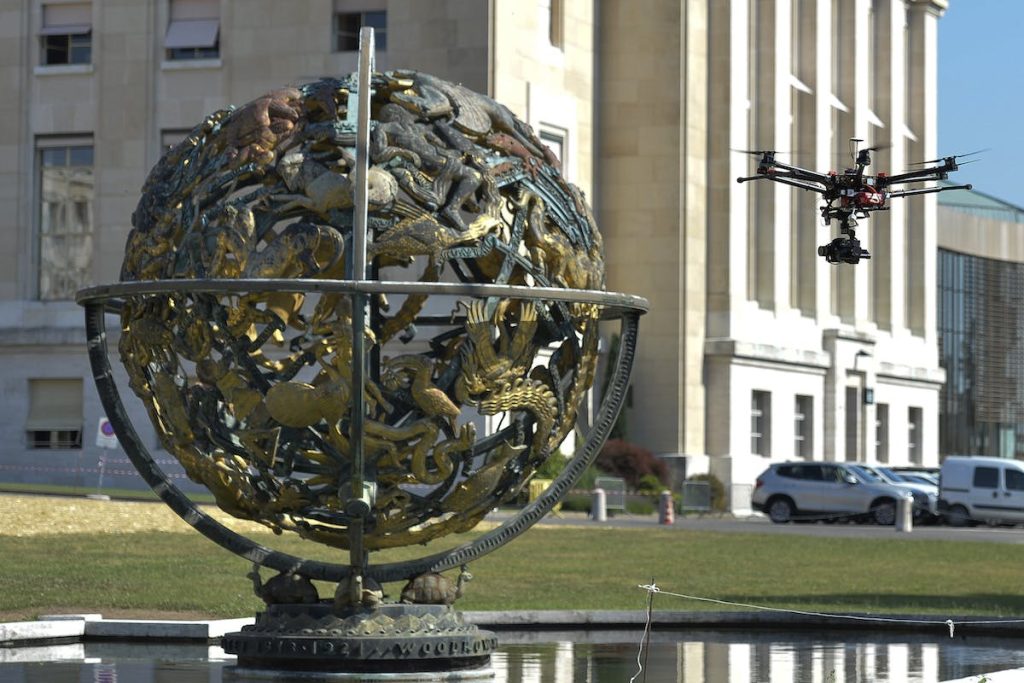The idea of robots flying through the sky are no longer a science fiction dream. Drones, or unmanned aerial vehicles (UAVs), are being used around the world as means of recreation, government strategy, and global development. Like all technologies, these machines can be used for nefarious or destructive purposes. However, drones are being used in a variety of creative ways to advance the Sustainable Development Goals (SDGs), including peacekeeping, combating poverty, and delivering aid.
The United Nations is actively exploring the uses of drones and working to address both the technology’s positive and negative outcomes. Read on to learn how.
The UN has supported the testing of drones for development. For example, the UN Children’s Fund (UNICEF) partnered with the Malawian government to launch Africa’s first humanitarian drone testing corridor, where they tested how UAVs can help to generate maps to monitor disasters and crises, extend Wi-Fi or cellphone signals, and assist in the transport of important supplies. This type of experimentation has led to the implementation of many innovative drone programs, including:
Delivering Development Materials
Delivering aid and other development materials can be costly, time intensive, and dangerous — especially during times of conflict or crisis. Drones are being utilized by UN agencies and other organizations to deliver materials such as vaccines, contraception, and humanitarian aid. UAVs reduce the time it takes to deliver these items; for example, a journey “from an urban center to a rural location that used to take two days now takes 30 minutes.” The increased pace and accessibility of delivery can mean more lives saved. Read more:
Mapping and Monitoring
In addition to delivering lifesaving aid, drones are also being used to monitor crises by capturing images and video from the skies. This new data is then fed to organizations to help them find safe routes for disaster response, design more effective development programs, and to identify and monitor new or ongoing crises. For example, drones are delivering information that helps the World Food Programme (WFP) to lower the amount of time needed to understand the impact of disaster, enabling them to respond to hunger more quickly and effectively. Learn more:
Creating Global Frameworks
Haidar Baqir, an IT engineer who launched WFP’s drones-against-hunger project, said, “the hard part is to arrive at a global regulatory regime that allows us to fly our kit safely, reliably, and effectively.” That is why the UN is working to set up frameworks for the use of drones and other emerging technologies. For example, the UN’s International Civil Aviation Organization has proposed the formation of a registry to remotely identify and track unmanned aircraft, along with their owner and operator.
The UN Secretary-General’s High-level Panel on Digital Cooperation will address technological questions at an even more macro level by setting up cooperation across domains and across borders help realize the full social and economic potential of digital technologies, mitigating the risks they pose, and curtailing any unintended consequences.
Note: This post is part of the 2018 +SocialGood series on emerging technologies.
Photo Credit: UN Photo/Jean-Marc Ferré

